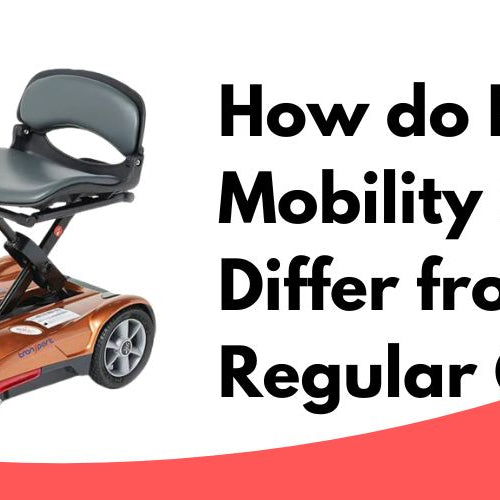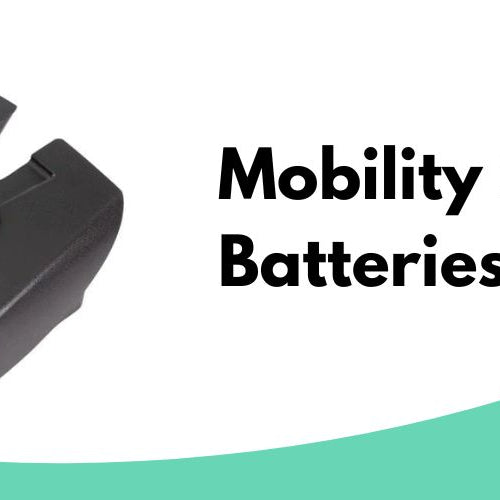Power wheelchairs have become an essential mobility solution for many individuals with physical limitations. These devices offer increased independence, allowing users to navigate their surroundings more easily and efficiently. One critical aspect to consider when choosing a power wheelchair is its weight, which can significantly impact its maneuverability, transportability, and compatibility with various environments. In the following paragraphs, we will explore the factors that contribute to the weight of a power wheelchair and provide essential information for potential users.
Generally, the weight of a power wheelchair varies depending on factors such as the frame material, size, battery type, and additional features. Lightweight power wheelchairs can weigh around 150 pounds, whereas more advanced models can exceed 400 pounds. Frame materials like aluminum contribute to lighter chairs, while steel frames add to the overall heaviness. Additionally, power wheelchairs with larger batteries or robust motors usually weigh more than their counterparts with lighter components.
The type of seat and adaptations for specific needs also contribute to the weight of a power wheelchair. Advanced seating systems providing pressure relief, positioning support or power seat functions are heavier than basic seating options. It is essential for users to consider their mobility requirements and prioritize what features will best suit their needs while keeping the weight within manageable limits. Ultimately, the specific weight of a power wheelchair should balance the user's comfort, safety, and functional requirements.
Power Wheelchair Weight Factors
Battery
The weight of a power wheelchair is significantly influenced by its battery. Since electric wheelchairs rely on batteries for power, heavier batteries contribute to overall weight of the chair. These different types of batteries come in various sizes and capacities, which will impact the total weight of the wheelchair:
- Lead-acid batteries
- Lithium-ion batteries
- Nickel-metal hydride batteries
Frame Material
The material used in constructing the frame of a power wheelchair is another essential factor contributing to its weight. Common materials used for constructing the frame include:
- Aluminum: Lightweight and durable, aluminum is widely used in power wheelchair construction for its ease of transport and lower overall weight without compromising the chair's stability.
- Steel: A heavy and sturdy option, steel is often used in bariatric power wheelchairs designed for individuals with higher weight capacities. This material adds to the total weight of the chair.
Seating and Cushions
Seating and cushion options for power wheelchairs can also impact their weight. A range of cushion materials is available, which affects not only the wheelchair's weight, but also the user's comfort and support:
- Foam cushions: Light in weight, foam cushions can be customized to provide adequate support for wheelchair users.
- Gel cushions: These cushions tend to be heavier than foam, but offer better pressure relief and proper weight distribution.
- Air cushions: Lightweight and adjustable, air cushions provide optimal pressure relief and support while maintaining a low overall weight.
Power Base
The power base of a power wheelchair houses the motor and other essential electronic components. The weight of these components varies based on factors such as the motor's size and capacity. Larger and more powerful motors will increase the chair's overall weight. Additionally, the battery size and type housed within the power base will also influence the weight.
Casters and Wheels
Casters and wheels play a critical role in determining the weight and maneuverability of a power wheelchair. A variety of wheel types and materials are available, which impacts both the chair's weight and its performance:
- Solid tires: Durable and long-lasting, solid tires add more weight to the power wheelchair compared to other tire options.
- Pneumatic tires: These air-filled tires offer a smoother ride, though they typically weigh less than solid tires and may require more frequent maintenance.
- Large casters: Bigger casters provide better stability and comfort, but they also increase the overall weight of the wheelchair.
To sum up, various factors contribute to the weight of power wheelchairs, such as batteries, frame materials, seating and cushions, power bases, and casters and wheels. All these factors play a crucial role in the overall performance, comfort, and functionality of a power wheelchair.
Types of Power Wheelchairs
Buy your perfect power wheelchair at Mobility Nest today! Call or email us for 1-on-1 support.
Lightweight Power Wheelchairs
Lightweight power wheelchairs offer users easier portability and more convenience when traveling. These chairs are designed with lighter materials, making them easier to transport and maneuver. Some models can weigh as little as 33 pounds, while others weigh around 50 pounds without the batteries. One example is the Pride® Jazzy® Passport, which weighs just 53 pounds without batteries. These lightweight models are perfect for individuals who are unable or unwilling to lift heavier chairs but still need the assistance a power wheelchair provides.
Mid-Wheel Drive Power Wheelchairs
Mid-wheel drive power wheelchairs are designed with their drive wheels positioned in the middle of the wheelchair's base. This configuration provides increased maneuverability and a tighter turning radius, making them suitable for maneuvering in small spaces, like homes and offices. While their weight can vary depending on their specific features, mid-wheel drive power wheelchairs generally fall within the 100-250 pound range. The added maneuverability and responsiveness provided by these chairs make them a popular choice among power wheelchair users.
Luxury Power Wheelchairs
For individuals seeking top-of-the-line comfort and performance, luxury power wheelchairs provide an advanced range of features and options. These chairs can come with customizable seating systems, adjustable leg rests, and advanced control systems, tailoring the user's experience to their specific needs. Luxury power wheelchairs typically have higher weight capacities, ranging from 250 to 350 pounds or more, to accommodate users with varying body types and bariatric needs. Although these chairs are often heavier and more costly, the enhanced features and increased durability make them an attractive choice for those seeking a higher quality power wheelchair experience.
To summarize, power wheelchairs come in a variety of types, such as lightweight, mid-wheel drive, and luxury models. These chairs cater to the specific needs and preferences of users, offering increased convenience, maneuverability, and advanced features. Each type has its own unique benefits and weight range, ensuring there is a power wheelchair available for every individual who needs one.
Power Wheelchair Performance and Limitations
Power wheelchairs are essential mobility aids for many individuals with disabilities or mobility issues. Understanding their performance and limitations is crucial for selecting the most suitable model for a user's needs. In this section, we will discuss maximum speed, turning radius, and long-distance capabilities of power wheelchairs.
Maximum Speed
The maximum speed of a power wheelchair depends on the model, battery type, and motor power. Generally, most power wheelchairs have a top speed ranging from 3 to 8 miles per hour (4.8 to 12.9 km/h). It's essential to consider the user's requirement for speed and stability while choosing a wheelchair, ensuring their safety and comfort during use.
Turning Radius
The turning radius of a power wheelchair refers to the minimum space required to make a full 360-degree turn without hitting obstacles. This is an important factor in maneuverability, especially in tight spaces or confined areas. Power wheelchair models vary in their turning radius, with some having a tight turning radius of 20 inches or less, while others may require 30 inches or more. Considering a user's living environment and daily routine can help determine the best model with the appropriate turning radius.
Long Distance Capabilities
Long distance capabilities of power wheelchairs are mostly influenced by factors such as battery life, terrain adaptability, and weight capacity. Here are some key points to consider:
- Battery life: Depending on the battery type and model, power wheelchairs can cover a distance of 10 to 25 miles (16 to 40 km) on a single charge. Frequent long-distance users may require models with extended battery life for uninterrupted mobility.
- Terrain adaptability: Some power wheelchairs are specifically designed for rough terrains, allowing users to navigate uneven surfaces or off-road conditions more comfortably. For those who frequently travel outdoors, it's important to select a model with good terrain adaptability.
- Weight capacity: The weight capacity of power wheelchairs usually ranges from 250 to 600 pounds (113 to 272 kg). Users with higher weight requirements should opt for bariatric power chairs that provide additional support and stability.
Power wheelchair performance and limitations should be considered while choosing the most appropriate model for an individual's needs. By understanding these aspects, one can make a well-informed decision that ensures a comfortable, safe, and efficient mobility solution.
Ease of Transportation
Ramp Access
The weight of power wheelchairs can be a crucial factor when considering their ease of transportation. It's important to acknowledge that accommodating a power wheelchair into various modes of transportation necessitates ramp access. Ramps enable wheelchair users to smoothly enter and exit vehicles without unnecessary strain or assistance. A lighter wheelchair can make navigating ramps less challenging as it requires less effort to propel and maneuver.
Self-Propel Option
While power wheelchairs typically have powered mobility functions, it can be useful for users to have a self-propel option. A self-propel feature allows wheelchair users to manually push themselves in their wheelchair when needed. The weight of the power wheelchair impacts the ease of self-propelling; the lighter the wheelchair, the easier it is for the user to push themselves. This becomes particularly beneficial in situations where power functions may not be viable, such as during travel or in low battery situations.
Folding Frames
Power wheelchairs come in both folding frame and rigid frame designs. Folding frames offer a significant advantage in terms of transportation as they can be easily collapsed for storage and transport. The weight of folding frame wheelchairs varies, but they are often lighter than rigid frame options, making them generally easier to lift and fit into vehicles. A lighter folding frame wheelchair can contribute to increased portability, which is vital for users who travel frequently or need convenient storage solutions. Some common features of folding frame wheelchairs include:
- Quick-release wheels for added portability
- Adjustable components for a customized fit
- Lightweight materials such as aluminum or titanium
Rigid Frames
Rigid frame power wheelchairs, on the other hand, have a fixed frame design that does not fold. While these wheelchairs may weigh slightly more than their folding counterparts, they often provide increased stability and durability. The trade-off in weight can be justified by the enhanced performance and sturdiness that rigid frames offer. It is essential for users to consider their transportation needs and weigh the benefits of each frame style before making a decision. Some attributes of rigid frame wheelchairs include:
- Robust construction for long-lasting use
- Enhanced stability and control
- Customizable seating options for personalized comfort
Comfort and Customization
When considering power wheelchairs, one essential aspect is the comfort and customization possibilities for the user. Power wheelchairs come in various designs, and their weights can also differ significantly. This variation in weight affects not only maneuverability but also the user's comfort.
A key component in the comfort of a power wheelchair is the seating. Many power wheelchairs offer customizable seat options, such as adjustable seat widths, depths, and heights. This allows users to find the perfect fit for their individual preferences and body types. Some wheelchairs also have adjustable backrests and armrests for added comfort and support.
Another important aspect of comfort is the suspension system. Power wheelchairs often have built-in suspension systems to minimize vibrations and provide a smoother ride, contributing to an overall improved user experience. This can be especially helpful for individuals who spend a lot of time in their wheelchairs, as it may reduce the risk of discomfort or pressure sores.
In terms of customization, power wheelchairs offer various options to suit the diverse needs of their users. These options can include:
- Various seat and cushion materials: Choices like foam, gel, or air-filled cushions can provide different levels of support and pressure distribution.
- Positioning accessories: Items such as lateral supports, headrests, and footrests can help with alignment and positioning.
- Controller types: Different controllers can be chosen to fit users' preferences, such as joysticks and other alternative input methods.
To summarize, power wheelchairs come in a range of weights, with comfort and customization being essential factors to consider when selecting the right chair. Customizable seating, suspension systems, and various accessories help ensure users have a comfortable and smooth experience.
Cost-Effectiveness and Group Affair
When considering power wheelchairs, one important aspect to explore is the cost-effectiveness of these mobility devices. In order to determine whether a power wheelchair is a suitable investment, it is essential to weigh the costs and benefits of the device. Many factors, such as functionality, durability, and overall performance, contribute to the determination of a power wheelchair's cost-effectiveness.
Group affairs, or collective, decision-making processes involving multiple individuals, are often involved in choosing power wheelchairs. This can be especially prevalent in organizations or institutions that need to provide these devices for a large number of individuals. In these cases, the group's ultimate decision should take cost-effectiveness into account.
-
Comparing power wheelchair models: To evaluate the cost-effectiveness of various power wheelchairs, it may be helpful to compare their functionalities and features. Some essential factors to consider include:
- Weight capacity
- Battery life
- Speed and maneuverability
- Ease of transport and storage
- Comfort and customization options
-
Maintainability and durability: One crucial aspect of cost-effectiveness is the product's lifespan. Power wheelchairs with longer service lives and lower maintenance costs can prove to be more cost-effective in the long run, despite potentially higher upfront costs.
-
Assessing user needs: Individuals who require the use of power wheelchairs have diverse needs and preferences. Ensuring that the chosen wheelchair meets the user's specific requirements is vital to its cost-effectiveness. For example, some users may prioritize speed, while others may focus on comfort and stability.
-
Group discounts and bulk purchases: In group affairs, securing discounts for bulk purchases, group discounts, or additional accessory bundles can contribute to the cost-effectiveness of the power wheelchairs selected. Negotiating with suppliers can help in obtaining the best deals tailored to the group's needs and budget constraints.
In conclusion, assessing the cost-effectiveness of power wheelchairs involves considering various factors, such as their features, overall performance, and users' specific needs. Group affairs should focus on negotiating the best deals that cater to the organization's requirements while ensuring the investment's long-term cost-effectiveness.
Historical Success and Development of Power Wheelchairs
Power wheelchairs have come a long way since their inception. The journey began in the late 19th century when inventors started adding rubber wheels, similar to those on bicycles, to wheelchairs. In 1881, pushrims were introduced for self-propelling purposes, and the first spoked wheels were used in 1900. However, it wasn't until 1916 in London that the first motorized power wheelchair was created.
The early 20th century saw a limited demand for power wheelchairs, but that changed following World War II. The increase in demand was primarily due to the rising number of wounded soldiers and veterans who needed assistance with mobility. This prompted an increase in research, development, and advancement of power wheelchair technology.
Some key achievements in the history of power wheelchairs include:
- Lightweight, compact designs aimed at improving user convenience
- Enhanced maneuverability with advanced joystick controls
- Longer battery life to ensure uninterrupted mobility
- Proliferation of customizable options to suit individual needs
This series of innovations has resulted in a diverse range of power wheelchair options for users with varying requirements.
Regarding the weight of power wheelchairs, it's worth noting that it can vary greatly. Factors that can influence the weight include:
- Frame material (e.g., steel, aluminum)
- Battery type used
- Size and type of motor
Overall, power wheelchairs weigh between 100 and 450 pounds. Lightweight models can weigh as little as 100-150 pounds, making them more portable and suited for users who frequently need to transport their wheelchair. On the other hand, heavier power wheelchairs with advanced features and powerful motors can weigh in excess of 350-450 pounds, providing more stability and support for users with more complex needs.
Throughout its history, the power wheelchair has seen remarkable success and development. As technology continues to advance, it is likely that we will see even more significant innovations in the years to come. This will enable power wheelchairs to better support the independence and mobility of their users, offering a better quality of life for those who rely on them.






Leave a comment